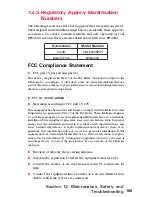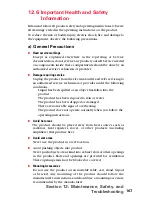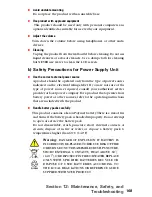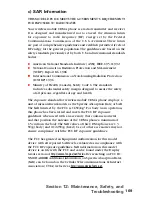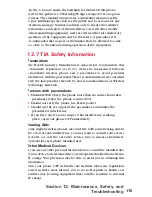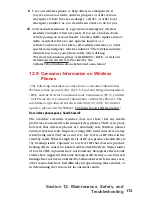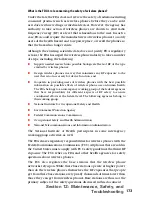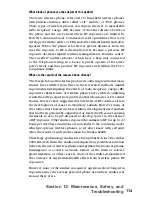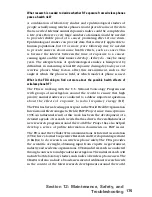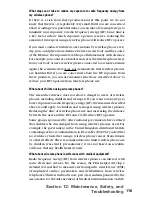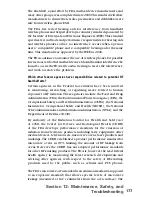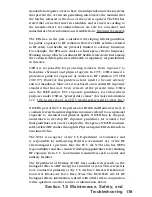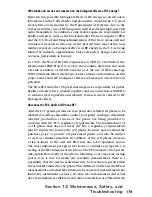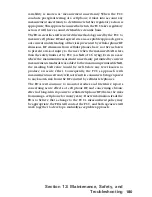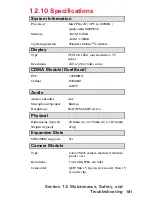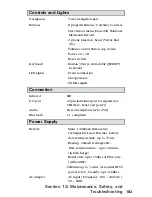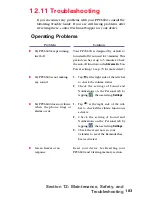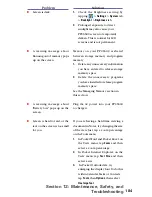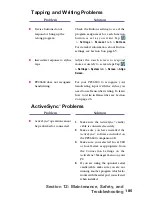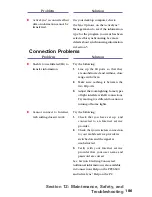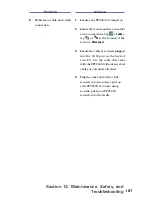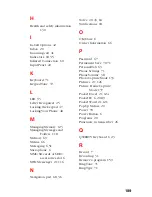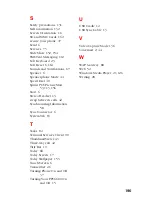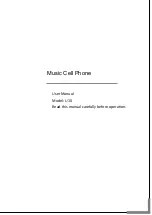
180
Section 12: Maintenance, Safety, and
Troubleshooting
variability is known as “measurement uncertainty.” When the FCC
conducts post-grant testing of a cell phone, it takes into account any
measurement uncertainty to determine whether regulatory action is
appropriate. This approach ensures that when the FCC takes regulatory
action, it will have a sound, defensible scientific basis.
The FDA scientific staff reviewed the methodology used by the FCC to
measure cell phone RF, and agreed it is an acceptable approach, given
our current understanding of the risks presented by cellular phone RF
emissions. RF emissions from cellular phones have not been shown
to present a risk of injury to the user when the measured SAR is less
than the safety limits set by FCC (an SAR of 1.6 w/kg). Even in a case
where the maximum measurement uncertainty permitted by current
measurement standards was added to the maximum permissible SAR,
the resulting SAR value would be well below any level known to
produce an acute effect. Consequently, the FCC’s approach with
measurement uncertainty will not result in consumers being exposed
to any known risk from the RF emitted by cellular telephones.
The FDA will continue to monitor studies and literature reports
concerning acute effects of cell phone RF, and concerning chronic
effects of long-term exposure to cellular telephone RF (that is, the risks
from using a cell phone for many years). If new information leads the
FDA to believe that a change to the FCC’s measurement policy may
be appropriate, the FDA will contact the FCC, and both agencies will
work together to develop a mutually-acceptable approach.

